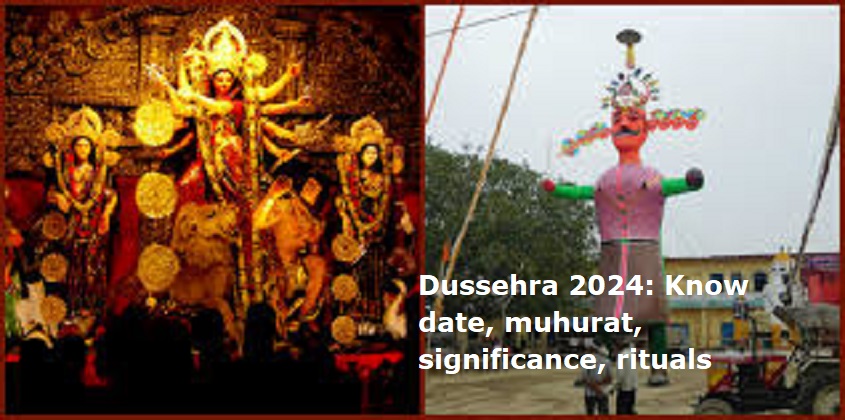
Mumbai: Navratri is one of the most revered, popular and eagerly awaited festivals of India. It is a ten-day festival which culminates with Dussehra or Vijayadashami on the tenth day. The tenth day of the festival is called Dussehra or Vijayadashami.
Dussehra is related to Lord Rama’s triumph over demon king Ravana whereas Vijayadashami is related to Goddess Durga who rid the Earth of the evil demon Mahishasura. Durga Puja or Durga Pujo is one of the main festivals that is celebrated in West Bengal and Assam.
Dussehra marks the celebration of victory of good over evil, of Rama over Ravana. In many parts of India, effigies of Ravana, Kumbhkaran and Meghnada are burnt on this day.
This year the festival of Vijayadashami, will be celebrated on October 12.
Here’s the auspicious muhurat, significance, rituals and all you need to know about this Dusshera:
Dussehra 2024: Auspicious Muhurat
Every year, the festival of Dussehra or Vijayadashami is celebrated on the Dashami Tithi of Shukla Paksha of Ashwin month. According to the Hindu calendar, this year the Dashami Tithi will begin on October 12 at 10:58 am. The Dashami Tithi will end on October 13 at 9:08 am. On the day of Dussehra, the Vijay Muhurta will be from 2:03 pm to 2:49 pm. People can worship Lord Ram in this Muhurta. The time for afternoon worship will be from 1:17 pm to 3:35 pm
Ravana Dahan Muhurta – 12 October 2024 from 5:45 pm to 8:15 pm
Vijayadashami Shastra Pujan Muhurta – 12 October 2024 from 2:02 pm to 2:48 pm
According to religious beliefs, Lord Rama killed Lanka King Ravana on the Dashami Tithi of Shukla Paksha of Ashwin month. On the day of Dussehra, Ravana’s effigy is also burnt in many places. The purpose of celebrating Dussehra every year is to give the message of truth, religion, and goodness to the people.
Also Read: Astrological predictions for today, October 12
Dussehra 2024: Rituals
On Vijayadashami, numerous ceremonies are performed, each with its meaning. Some of the prominent are as follows:
Shami Puja: Devotees honor the Shami tree, which is considered sacred in the Hindu religion. The tree is supposed to have witnessed the Pandavas’ banishment during the Mahabharata and serves as a symbol of victory.
Aparajita Puja: The term “Aparajita” means “invincible,” and this ceremony is dedicated to Goddess Aparajita, a form of Durga, to obtain her blessings for success and protection.
Seema Avalanghan : This ancient ceremony entails symbolically crossing the limits of one’s hamlet or city to reflect the conquering of new territory or personal victories. It represents broadening one’s horizons and accepting new opportunities.

Post Your Comments